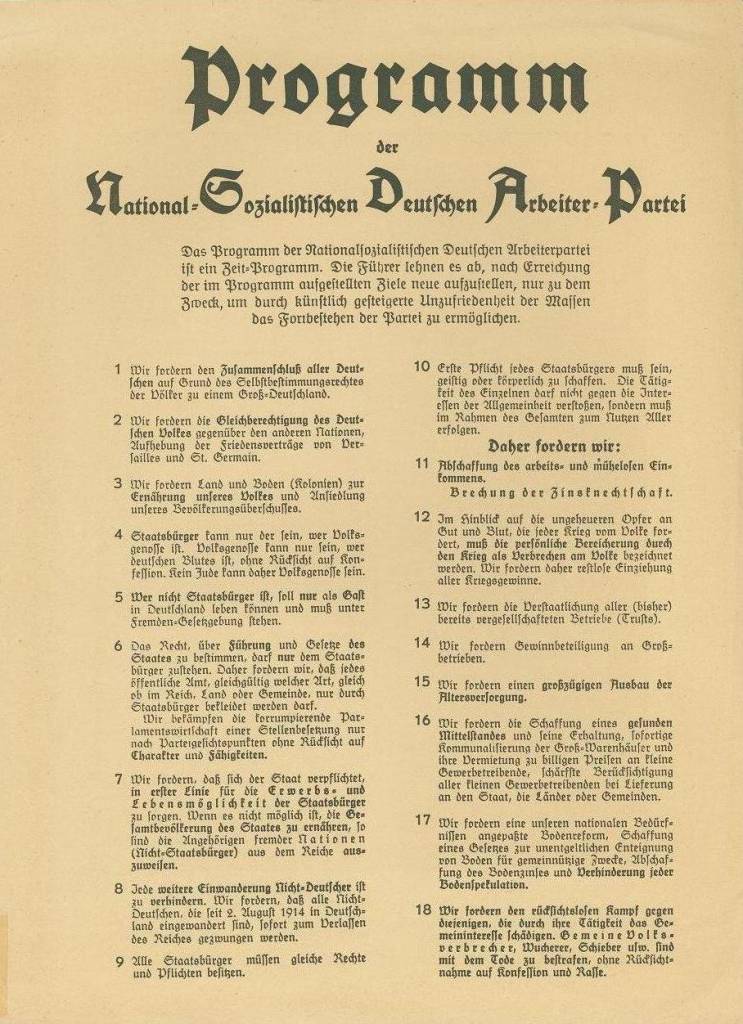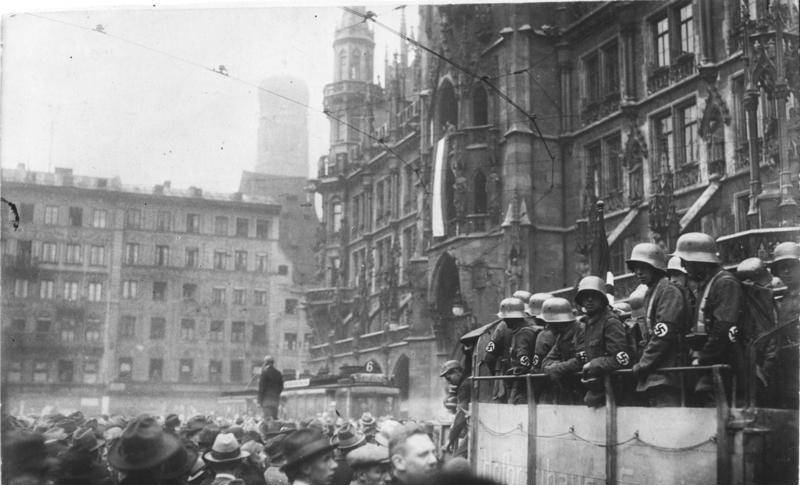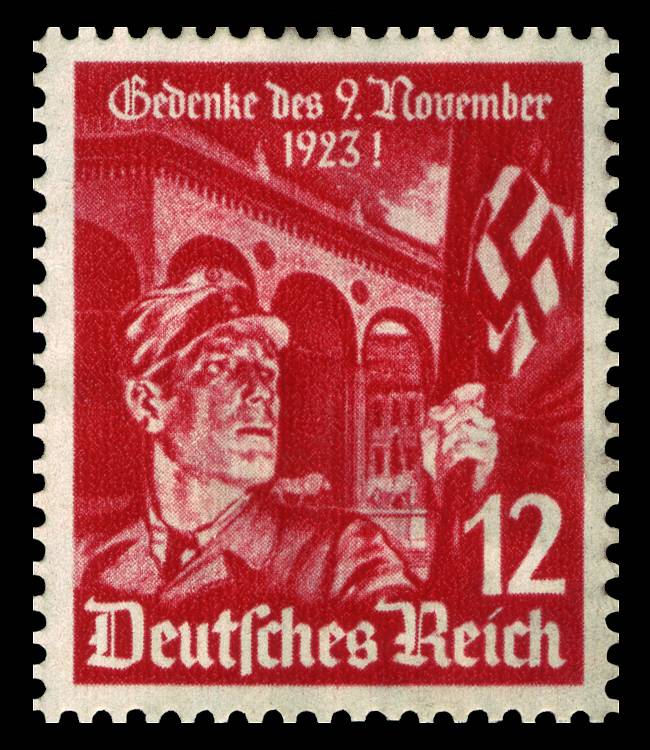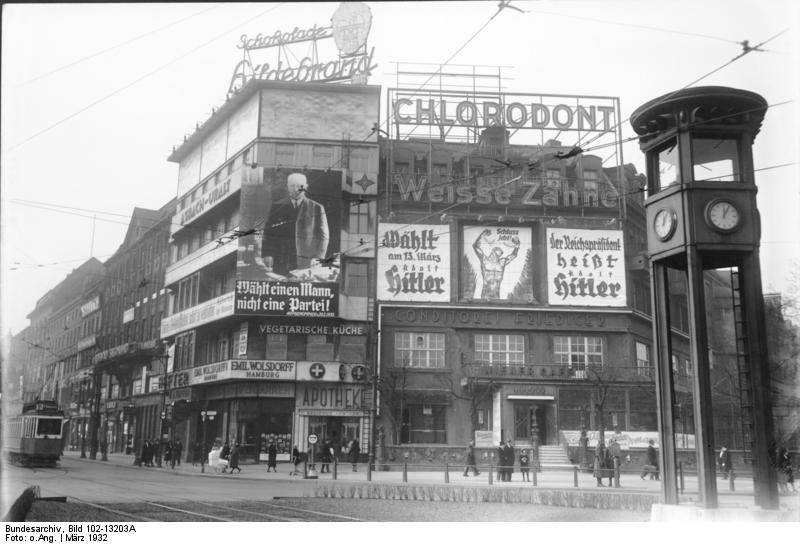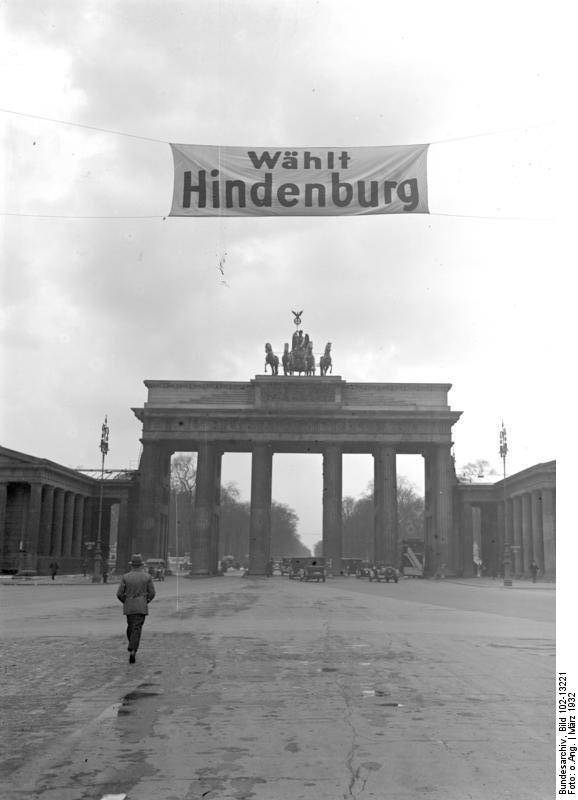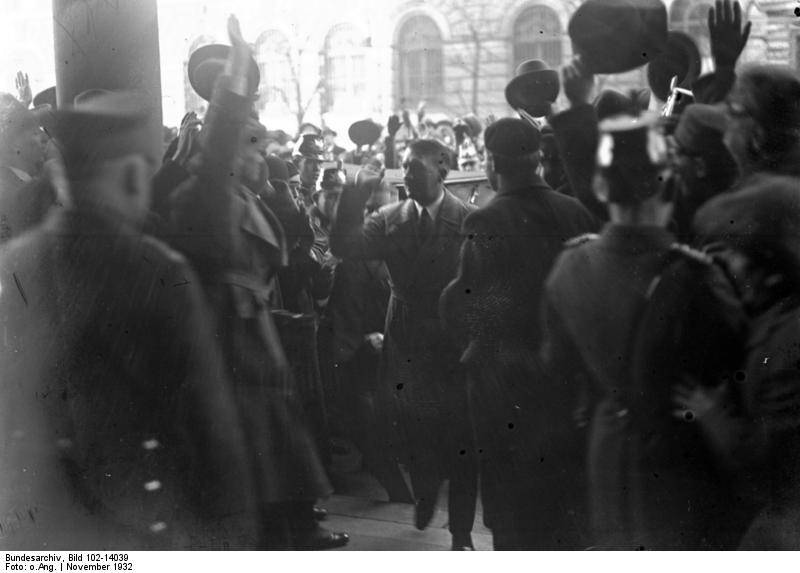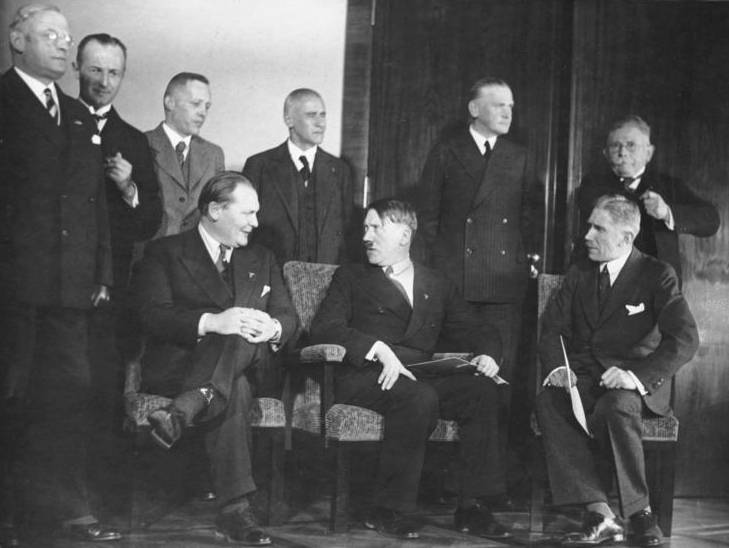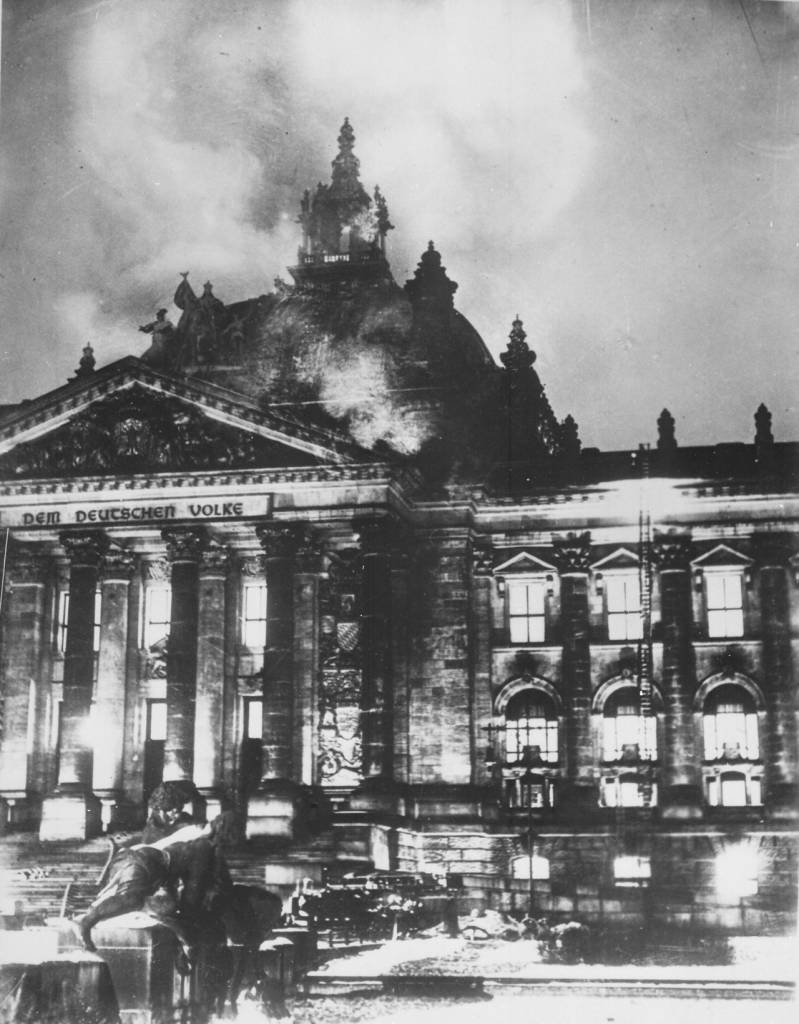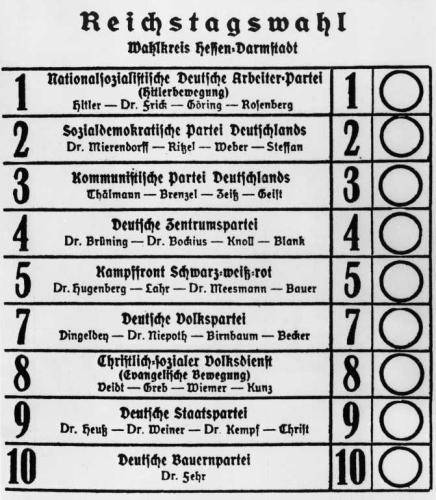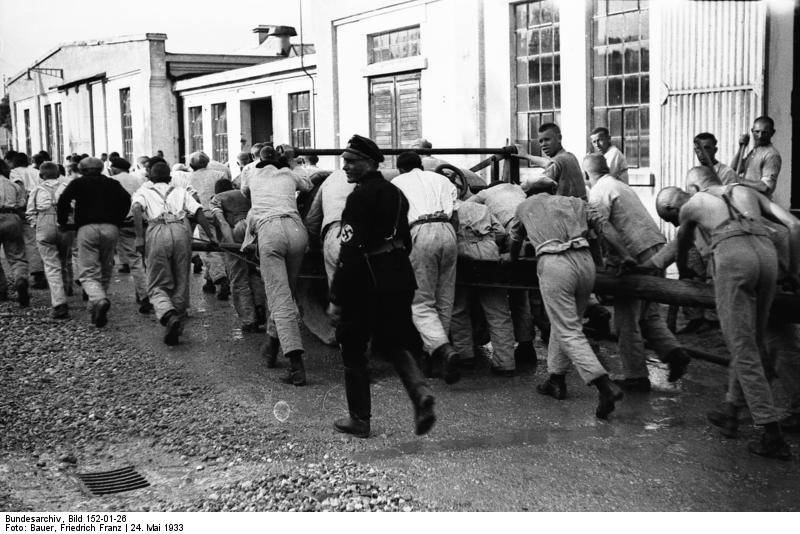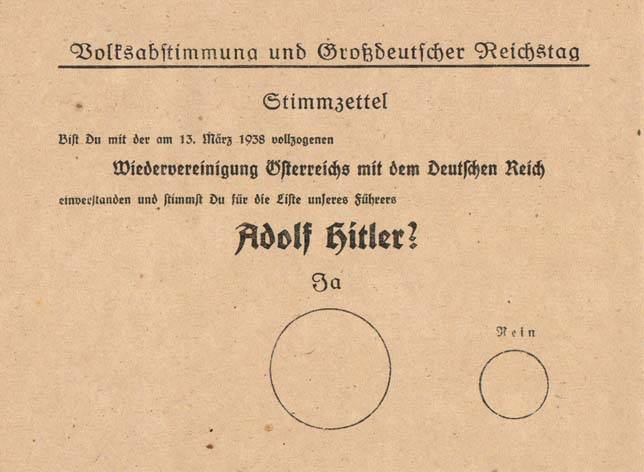-
-
During the Weimar Republic (1919 to 1932), a series of coalition governments ruled Germany. No single political party was able to establish a parliamentary majority. After June 1930, a succession of chancellors abandoned the search for a working parliamentary majority and governed using presidential decrees instead. The Nazis rise to power brought an end to the Weimar Republic.
-
-
January 5
Creation of the Deutsche Arbeiterpartei (DAP: the German Workers' Party), the predecessor of the National Socialist German Workers’ Party (NSDAP or "Nazi" party).
-
January 19
First federal parliamentary election in the new Weimar Republic. It was the first German election held using proportional representation and women's suffrage.
-
-
February 24
25-point program of National Socialist German Workers’ Party (Nationalsozialistische Deutsche Arbeiterpartei known as Nazi Party) is written.
-
-
June 6
Federal parliamentary election: The Social Democratic Party remains the largest party in the Reichstag (German parliament), although it lost over a third of its seats. Voter turnout is 79.2%.
-
-
November 9
Members of the Nazi Party attempt a violent overthrow of the Bavarian Government in a failed action known as the Beer Hall Putsch. Hitler receives a minimal jail sentence. In prison, he writes his political manifesto, Mein Kampf (“My Struggle”).
-
-
April 1
Creation of the National Socialist Freedom Party (German: Nationalsozialistische Freiheitspartei, or NSFP). In the aftermath of the Munich Putsch, the Nazi Party is banned. The National Socialist Freedom Party enables remaining Nazi Party members to legally carry on the activities of the party. It includes the same members and ideology as the Nazi Party.
-
May 4
Federal parliamentary election is held after the dissolution of the Reichstag (German parliament) on March 13, 1924. The Social Democratic Party remains the largest party in parliament, winning 100 of the 472 seats. Voter turnout is 77.4%. The National Socialist Freedom Party receives 6.5% of the vote and holds 32 seats.
-
December 7
Second Federal parliamentary election in one year, after the dissolution of the Reichstag (German parliament), on October 20, 1924. The Social Democratic Party remains the largest party after winning 131 of the 493 seats. Voter turnout is 78.8%. The National Socialist Freedom Party wins 3% of the votes, losing 18 seats.
-
February 27
The Nazi Party is reconstituted after its ban expires in January 1925 and Hitler is released from prison; the National Socialist Freedom Party is then reabsorbed into the Nazi Party.
-
May 20
Federal parliamentary election: The Social Democratic Party remains the largest party in the Reichstag (German parliament) after winning 153 of the 491 seats. Voter turnout is 75.6%. 2.6% vote for the Nazi Party (NSDAP), which loses 2 seats.
-
October 29
Wall Street Crash or "Black Tuesday", the most devastating stock market crash in the history of the United States. The crash signalled the beginning of the Great Depression that affected all Western industrialized countries for 10 years. The Weimar Republic was hit hard by the depression, as American loans to help rebuild the German economy stopped.
-
September 14
Federal parliamentary election: Despite losing 10 seats, the Social Democratic Party of Germany remains the largest party in the Reichstag (German parliament), with 143 of the 577 seats, whereas the Nazi Party dramatically increased its number of seats from 12 to 107 with 18.3 % of the vote.
-
-
March 13
First round of the second (and last) presidential election of the Weimar Republic. The five candidates are Paul Von Hindenburg (independent) who scores 49.6% of the votes; Adolf Hitler (NSDAP-Nazi Party) who scores 30.2%; Ernst Thälmann (KPD-Communist Party) 13.2%; Theodor Düsterberg (Stahlhelm, Bund der Frontsoldaten) 6.8% and Gustav A. Winter (Inflationsgeschädigte) 0.3%. Since no candidate managed to secure an absolute majority, a second round is planned.
-
-
-
April 10
Second round of the presidential election: Hindenburg is re-elected for a second 7 year term with 53.1% of the vote. Adolf Hitler receives 36.7% of the vote and Ernst Thälmann 10.1%.
-
-
June 16
The Lausanne Conference, a meeting of representatives from the United Kingdom, Germany, and France results in an agreement to suspend World War I reparations payments imposed by the Treaty of Versailles. By that time, Germany had repaid one eighth of the reparations.
-
July 31
Federal parliamentary election: The Nazi Party becomes the largest political force in Germany by receiving 37.4 % of the vote, representing 230 seats in Parliament. Given that the Communists also remained strong, the anti-republican parties now have a majority in the Reichstag (German parliament).
-
-
November 6
Federal parliamentary election: The Nazi vote goes down to 33% while the Communist and the National Conservative votes increase. This election turns out to be the last free election in Germany before the Nazi takeover. The next free election is not held until August 1949 in West Germany; while the next free election in reunited Germany will take place in December 1990.
-
-
-
January 30
The new Cabinet is sworn in, with Adolf Hitler as Chancellor of the German Republic. The Cabinet limits Nazi participation to three ministers: Adolf Hitler, Wilhelm Frick (Interior minister) and Hermann Göring (Minister without portfolio, Minister of the Interior for Prussia, and Reich Commissioner of Aviation).
-
-
-
February 27
In Berlin, the Reichstag (German parliament building) is burnt down. The Communists are blamed.
-
-
February 28
Using the Reichstag (German parliament) fire as pretext, Hitler issues emergency decrees that mark the end of all basic freedoms, including freedom of speech, press, assembly and protection from arbitrary arrest.
-
-
March 5
Federal parliamentary election: The Nazis register a large increase in votes, again emerging as the largest party by far. However, they fail to obtain an absolute majority and need the votes of their coalition partner, the German National People's Party (DNVP) for a working majority.
-
-
-
March 22
The first 100 prisoners arrive in the concentration camp in Dachau. They are all Communists. Dachau is the first concentration camp created by the Nazi regime and serves as a model for other concentration camps. Between 1933 and 1945, over 200,000 people are imprisoned in Dachau and its subsidiary camps. An estimated 41,500 prisoners were murdered there.
-
-
March 23
The Enabling Act is passed, giving the government the power to enact emergency decrees without consent of Parliament. All Communist deputies and 12 Social Democrat deputies have fled or been arrested, and are not present to vote.
-
November 12
First federal parliamentary election under Nazi Party rule. By this time, all opposition parties had been banned. Voters are presented with a single list containing only Nazi Party members and non-party "guests" that fully support the Hitler regime. In spite of this climate of terror, 3.3 million voters submit invalid ballots to protest against the regime. The new Reichstag (German parliament) is exclusively composed of NSDAP members and sympathisers. On the same day, a referendum takes place about Hitler's decision to pull Germany out of the League of Nations. Officially, the measure is approved by 95.1% of voters.
-
-
August 2
President Hindenburg dies. Hitler combines the positions of President and Chancellor. He declares himself Führer (leader) and becomes the new dictator of totalitarian Germany.
-
-
-
March 29
Federal parliamentary election takes the form of a single-question referendum, asking voters whether they approve of the military occupation of the Rhineland and of a single party list composed exclusively of Nazi and "guest" candidates for the new parliament. The election is characterized by voter intimidation and a massively lop-sided result.
-
-
-
April 10
Federal parliamentary election takes the form of a single-question referendum asking whether voters approve of a single Nazi-party list for the Reichstag (German parliament) as well as the recent annexation of Austria (Anschluss). This is the final election of the Reichstag during Nazi rule. The Nazi candidates officially tally 97.32% of the votes. The new parliament convenes for the first time on January 30, 1939. It only convenes a further seven times, the last time on July 26, 1942. On January 25, 1943, Hitler postpones election for a new parliament until after the war.
-


